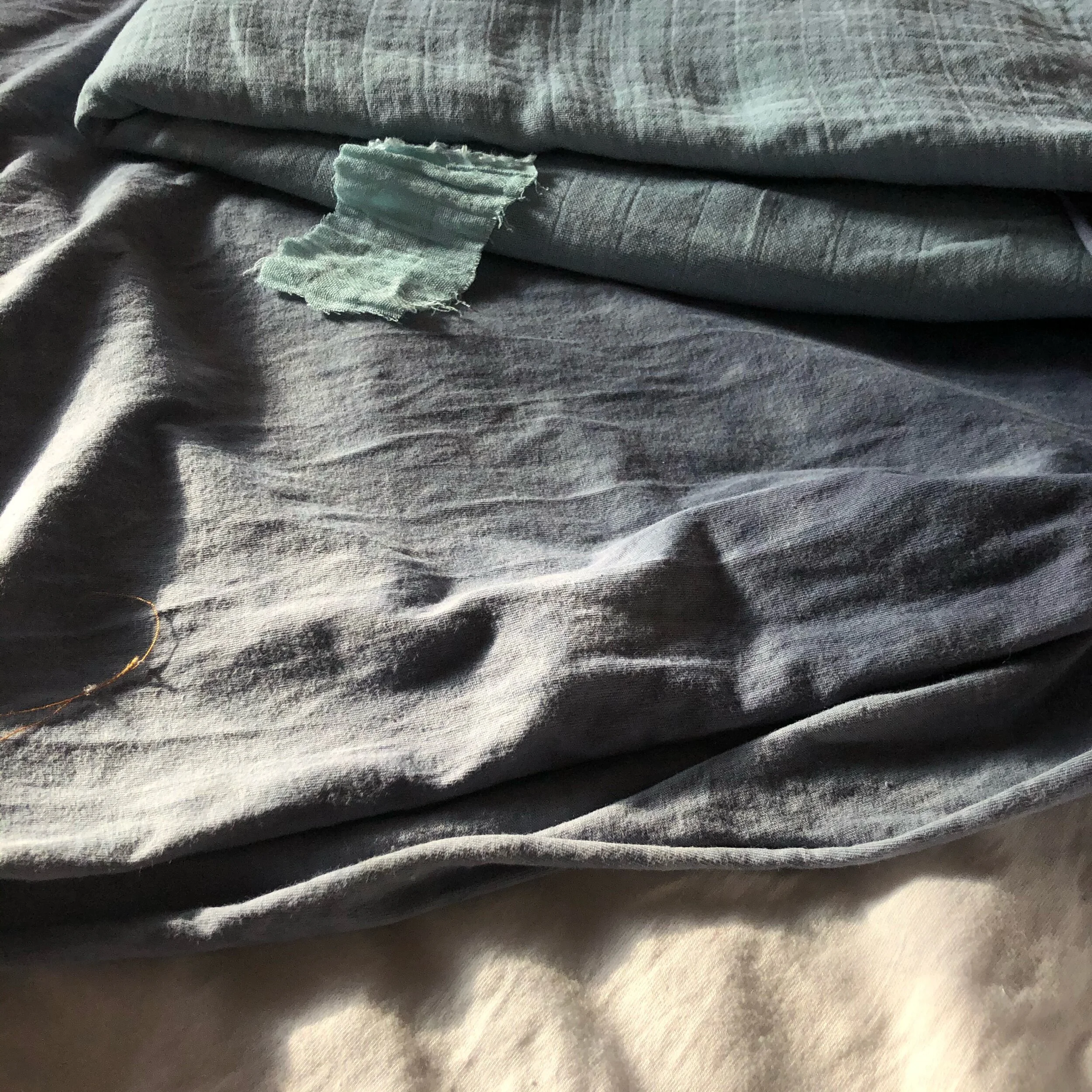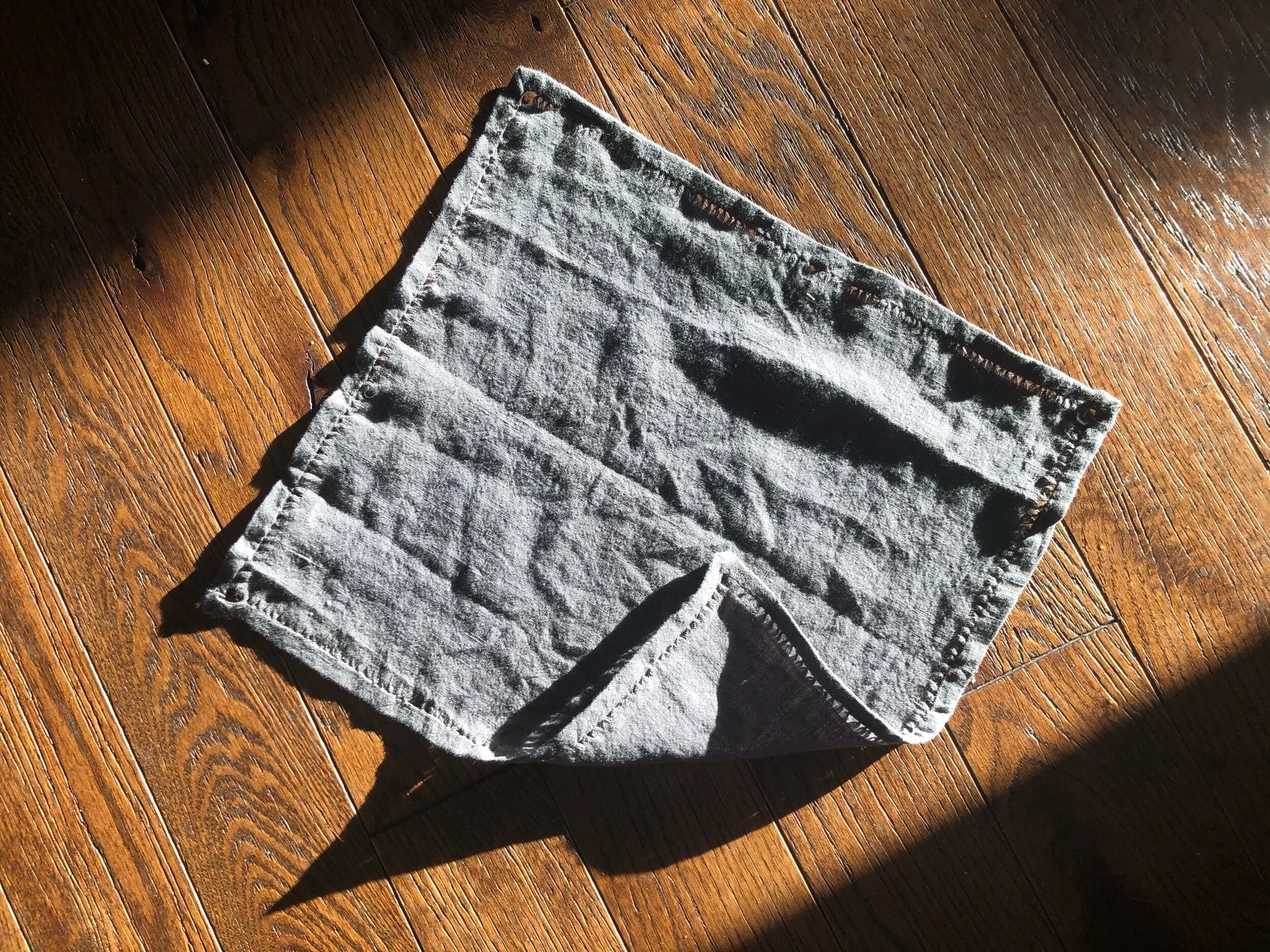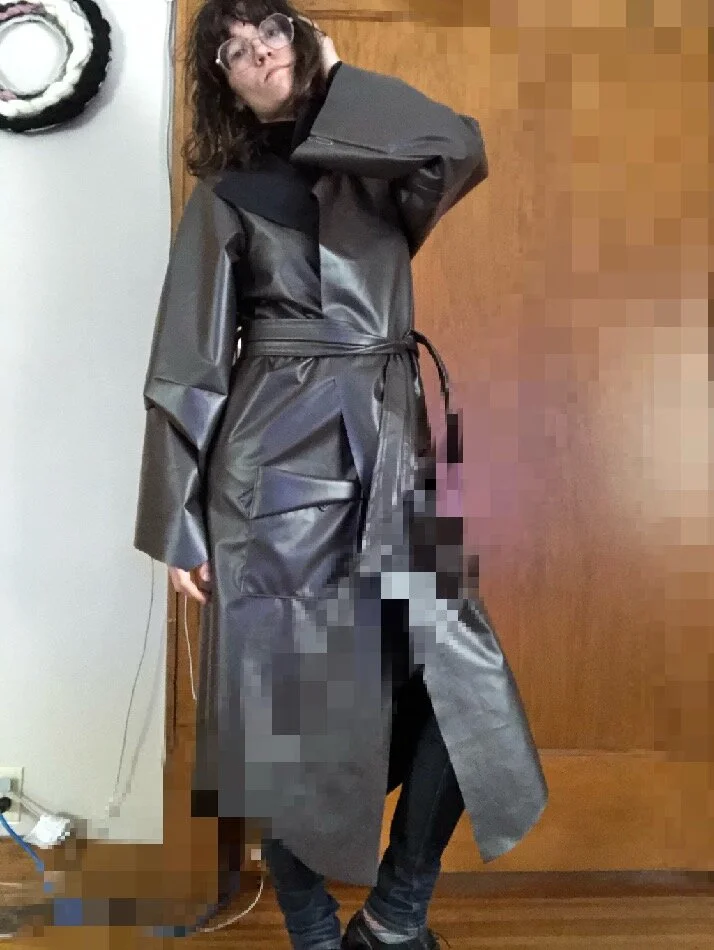Black bean dyeing
I recently tried my first batch of natural dye-ing and it came out pretty wonderfully. I would actually have gone for conventional dye, but then discovered that the Rit dye carried at Michael’s and Fabricland isn’t actually wash-fast, so I figured there was absolutely no reason not to do natural dyeing instead.
The main piece of fabric that needed dyeing was this light green cotton muslin gauze from Simplifi, which I ordered as baby blue but arrived a bit too green for my tastes. The original thought had been breezy summer wear, but the colour wasn’t gonna work. Hence settling on black beans, as what I wanted to achieve was just more blue.
The second piece to be dyed is a panel of white cotton jersey also from Simplifi, earmarked to be a panel in a Ruska tee from the Breaking the Pattern book.
I don’t know much about the science/art of this, so rather than get into that, I’ll record the ratios/ numbers used here. Of course, I’m doing this a month after the fact and going from the rough notebook notes, so I’m losing some details. let that be a lesson in making notes as you go!!
The fabric
White cotton jersey = 3 oz / 85g
Greenish cotton muslin = 11.5 oz / 326 g
Cleaning
for the muslin: 16 qts water, 2 tbsp washing soda, 1 tbsp detergent
for the jersey: 6 qts water, 1 tbsp washing soda, 1 scant tbsp detergent
Boiled for a couple of hours, then left soaking. The muslin caught air like wild, needed to be tamped down.
Mordanting
mordanted both fabrics together, with a whole container of grocery store alum, roughly 66g.
Dyeing
5 cups of black beans left to soak 24 hours in 12 cups of water. I’d intended to refrigerate them and drain it all a little early so I could use the beans in a meal, but forgot and left them on the counter, so fed some of them to the vermicompost worms and tossed the rest.
I filtered the beans out through a simple colander, and didn’t worry much about sediment.
Soaked the jersey for 12 hours, turning often. Got too excited to see the final results to leave any longer. So blue!!
Fresh out of the dye bath
Then soaked the muslin for a proper 24 hours, turning and stirring often. This colour came out much more even.
Washed both pieces immediately afterwards to check colourfastness, with older but white towels. A real success!
Next up is using the jersey for a tshirt!!
Update
so black bean is not a lightfast dye! More on that on my tshirt post, but here we are several months later - much less dark, much more yellow










